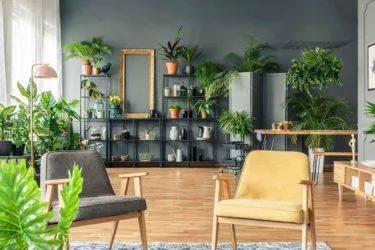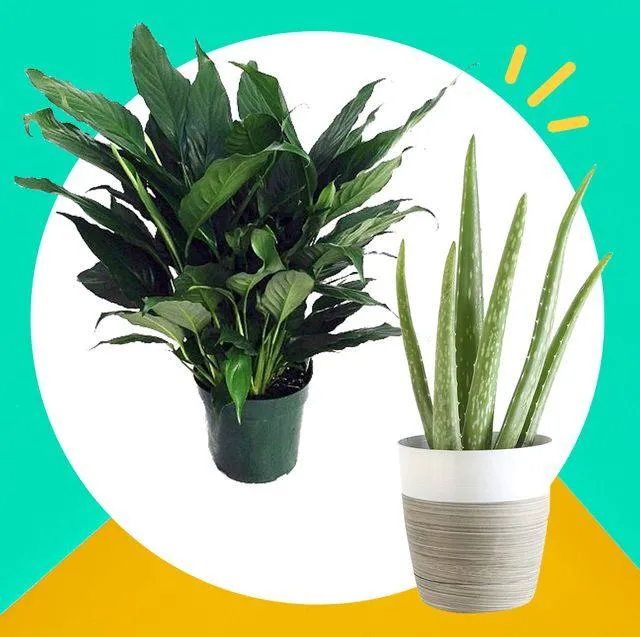The Best Indoor Tree Plants for Your Home
If you’re looking for easy-care indoor plants to add some greenery to your space, tree plants are a great option. Trees not only provide beauty and oxygen, but also have many health benefits. In this article, I’ll cover the top 10 best indoor tree plants for beginners along with tips for caring for them. By the end, you’ll have all the info you need to choose and grow indoor trees that will thrive for years.
Top 10 Easy Indoor Tree Plants
- Dracaena species: Often called “lucky bamboo,” dracaenas come in a variety of colors and sizes. They are extremely low maintenance and tolerant of low light. From my experience, the green and white variegated kinds are especially fast growers.
- Ficus tree: Ficus, commonly known as rubber plant or rubber tree, is very durable and grows well indoors. It does best in medium to bright light. I’ve found the green leaf variegated varieties to be the hardiest. Be aware, some people are allergic to the white sap.
- Ponytail palm: With its unique spherical trunk and fountain of long, narrow leaves, the ponytail palm is both dramatic and forgiving. It can go for weeks without water. I’ve had one thrive in my home for over 5 years with minimal care.
- Janet Craig dracaena: This tree-like dracaena has dark green stalks that arch upwards, giving it a statuesque appearance. It tolerates low light and drying out between waterings well. From my experience, it takes neglect or stagnant indoor conditions to damage a Janet Craig dracaena.
- Parlor palm: With its wide fronds radiating out like a fan, the parlor palm has an elegant tropical look. It prefers medium to bright light. As long as it gets adequate water, mine have lived for years without issues. Occasionally wiping down the leaves also keeps them looking their best.
The rest of the top 10 indoor tree plants include ZZ plant, Snake plant, Bird’s nest fern, Chinese evergreen, and Umbrella plant. All are very hardy and forgiving of occasional neglect. With the right care tips, any of these trees would make great additions to provide natural beauty inside your home.
Caring for Indoor Tree Plants
Here are some basic guidelines for caring for the above tree plants indoors:

- Light: Most prefer medium to bright indirect light. Dracaenas, snake plant and ZZ plant tolerate lower light the best. Ponytail palm likewise does quite well in low light.
- Water: Allow the top 1-2 inches of soil to dry out between waterings. Dracaenas, snake plant and ZZ plant can go even longer without water. For ficus and parlor palms,weekly water may suffice.
- Humidity: Trees like ficus and bird’s nest fern appreciate frequent misting or a pebble tray. A humidifier can also help, especially in dry climates or indoor-heated rooms during winter. Placing plants together also locally boosts humidity levels.
- Fertilizer: In the spring and summer, use a diluted liquid houseplant fertilizer every few weeks. Avoid getting water or fertilizer on the leaves as it may cause browning. Wipe any spills immediately.
- Pruning: Remove any dead or diseased leaves or branches. Minor shaping may be done to promote bushier growth. Most trees respond well to an annual trim or repotting.
The key is observing your plants and adjusting care to fit their specific needs based on your conditions. With some trial and error, you’ll find what works. Unlike most other houseplants, many tree plants are extremely hardy and able tolerate less-than-perfect indoor conditions. Their resilience is part of what makes them such great starter indoor greenery for beginners.
Besides regular care, here are some extra tips that help indoor trees thrive:
- Rotate plants: Turning pots periodically adjusts for any directional light bias in the home. This promotes even growth.
- Monitor pests: Check regularly for signs of insects like spider mites or scale. Wiping leaves with diluted neem oil helps control minor infestations.
- Adjust water if moving: When relocating a plant, watch it closely at first as conditions will change. Water less for plants in darker spots or more for those moved to sunnier areas.
- Repot annually for young plants: Transplant into the next pot size up each spring once roots start circling the drainage holes. This encourages further development.
- Prune if leggy: Occasional trimming back stimulates Bushier regrowth and denser foliage, especially on trees that tend to get tall and top-heavy over time indoors.
With a little TLC following these care fundamentals, you can keep indoor trees looking their fullest and greenest for years. The rewards are plentiful – from the welcoming ambiance of greenery to the air-purifying benefits. With practice, tree care eventually becomes second nature.

To summarize the top user intentions for choosing an indoor tree plant, here are the key factors to consider:
- Ease of care – low maintenance needs
- Hardiness – forgiving of less-than-ideal conditions
- Size – compact varieties fit smaller spaces better
- Appearance – diversity of shapes, sizes, foliage colors and textures
- Lighting suitability – fit the lighting conditions at your home
- Growth rate – fast or slow growers depending on maturity desired
- popularity – commonly available, less likely to have issues finding or caring for
With any of the recommended tree varieties here paired with some simple care techniques, you can enjoy the green benefits these plants provide for many years to come. Hopefully this guide has given you enough information to choose a tree that works well for your indoor environment and style. Let me know if you have any other questions!
Top Indoor Tree Plants for Beginners
| Plant | Sun Exposure | Watering | Size | Care Level |
|---|---|---|---|---|
| Snake Plant | Low to Medium | Allow Soil to Dry Out | 2-4 feet tall | Low |
| Pothos | Low to Bright Indirect | Water When Top Inch is Dry | Trailing vines up to 10 feet | Low |
| ZZ Plant | Low to Bright Indirect | Water Every 2-4 Weeks | 1-3 feet tall and wide | Very Low |
| Peace Lily | Medium to Bright Indirect | Water When Soil is Dry | 1-3 feet tall and wide | Low |
FAQ
-
What types of trees grow well indoors?
Plants like the Chinese evergreen, snake plant, and peace lily are kinda hardy and will basically survive in low light. Spider plants also do very well inside and are sort of tough. Plus they add nice green to a room.

-
How often should indoor trees be watered?
It depends on the exact plant, but most indoor trees need water around once a week. However, you should check the soil before watering – if the top inch is dry, it’s probably time to water. But if the soil still feels damp, hold off for a bit. The last thing you want is root rot from too much water.
-
What kind of light do indoor trees prefer?
While some plants can handle low light, trees will generally do best in a spot with bright, indirect sunlight. Looking for a window facing east or west is usually best. But even north windows can work if the tree is close enough. At the same time, direct sun can scorch some trees used to shade, so consider moving them out of the hottest afternoon rays.
-
How large do indoor trees get?
Tree sizes vary widely – some stay quite small, only reaching a couple feet, while others can expand to over 6 feet tall. Before buying, check the mature size so it does not end up too big for its space. Unless you want to do constant pruning, go for trees labeled “compact” varieties. But who knows, perhaps with the right care even big trees can thrive inside?

-
What are some common problems with indoor trees?
Pests like spider mites or scale can be awful, so keep an eye out for tiny insects or dust-like spots on leaves. Overwatering is another main issue – as the great plant guru Mr. GreenThumb says, “when in doubt, leave it out.” Leaf drop may also occur if trees are moved around a lot or if conditions change rapidly. But with a little TLC, many problems can be avoided.
-
Do indoor trees improve air quality?
Studies appear to show some common houseplants like peace lilies and spider plants do help clean the air indoors by absorbing toxins. They may take out formaldehyde, benzene, and even odors. So in that way, trees could make the home environment healthier – if that claim isn’t too good to be true! But does one little plant really make a difference? I dunno, you might need a whole jungle to get stunning results.
